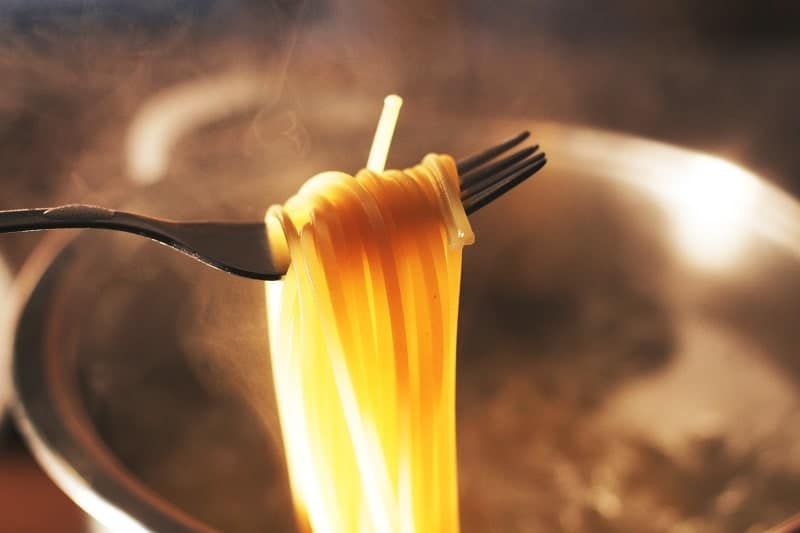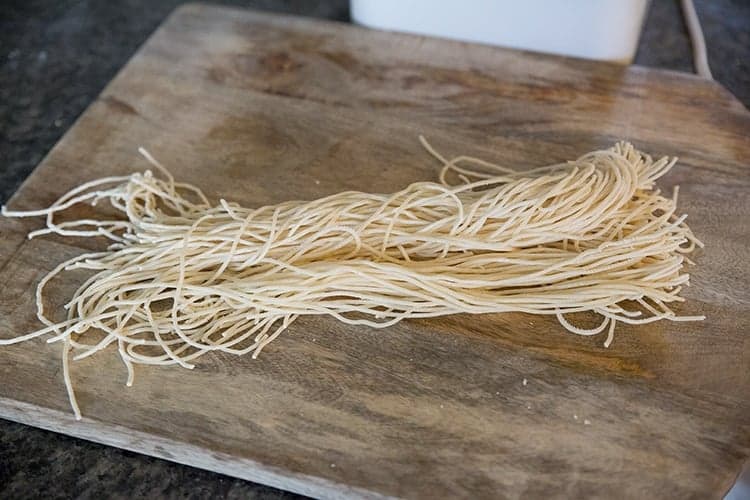If you have spent any time looking up pasta recipes online, you will likely have stumbled across a pretty confusing, strangely out of place Italian term that left you puzzled: al dente. Every single chef and recipe website seems to demand that you cook your pasta until it is al dente, but neglects to actually explain what on earth that means.
Let’s examine what exactly al dente means, and how you can best cook your pasta accordingly.

What is Al Dente?
Al dente is an Italian term that means “to the teeth.” This strangely horrifying sounding description is actually simple when it comes to pasta. It refers to the idea of cooking pasta until it still has just a little bit of bite in it, rather than all the way cooked.
When you cook pasta, you are usually using dry, water-based pasta, which is thin and brittle and, were you to try and eat a bit, would shatter in your mouth and taste pretty terrible.
When you cook it in salted, boiling water, the flour gets cooked and softens, with water filling in the cell wall gaps and giving it that supple and gentle texture that everyone likes.
However, the process of softening the pasta occurs from the outside inwards; this means that the exterior of the pasta cooks first, gradually going down towards the center.
When you cook pasta all the way, you stop when the flour at the very center has softened and fully cooked. With al dente, however, you stop just shy of this, making sure to leave a little bit of the pasta under cooked in the very middle.
So, now that we understand what al dente is, how do we actually replicate it? It is all well and good being told to cook it to al dente, but how do you reliably reproduce it in the kitchen?

How to cook to al dente
The easiest and simplest way to make al dente pasta is to do exactly it is says in the name; put it “to the teeth!”
To do this, cook your pasta precisely as you normally would according to the packet’s instruction. However, about one to two minutes before you would normally stop cooking the pasta, take a small piece of it and taste it.
What you are looking for is that, when you bite down on the pasta, it sticks just a little bit to your teeth and it requires a touch of pressure to get through. You don’t want it so underdone that it literally sticks to your teeth, but it should take just a little bit of effort to bite through it cleanly.
If you want a visual method, then simply cut open the pasta using a knife, or just tear it if you can handle the heat of the pasta water. The inside of the pasta should have a very fine white center, not so opaque that it takes up the majority of the pasta, but enough that you can still see it, almost like the ring of a tree.
Once you have reached that point, you can drain your pasta and serve it; you have made al dente pasta!

Why do so many recipes insist on this?
Considering al dente basically just means under cook your pasta a little bit, you might be wondering why on earth so many recipes absolutely insist that you do it.
While for some chefs, it is certainly a prestigious and traditional thing, as everyone’s Italian grandmother did it this way, so it makes sense to copy them.
However, the practical reality is that it just makes sense. With ultra-soft, overcooked pasta, it has a tendency to fall apart when you bite into it. This is especially a problem if you are having pasta with sauce, as you want your pasta to retain a bit oh physical structure, enough o be able to cling onto the sauce at least.
Furthermore, remember that pasta doesn’t stop cooking as soon as you drain it and put it on a plate. The residual heat within the pasta keeps cooking the center! If you taste your pasta and it feels a little bit hard in the middle (the perfect al dente!) then it will soften up considerably by the time you get it drained, mix it with your sauce and serve it in a bowl.
Al dente isn’t just the best method of serving pasta for tradition’s sake or even the tastiest; it’s just the way that makes the most sense.












Leave a Comment or Recipe Tip